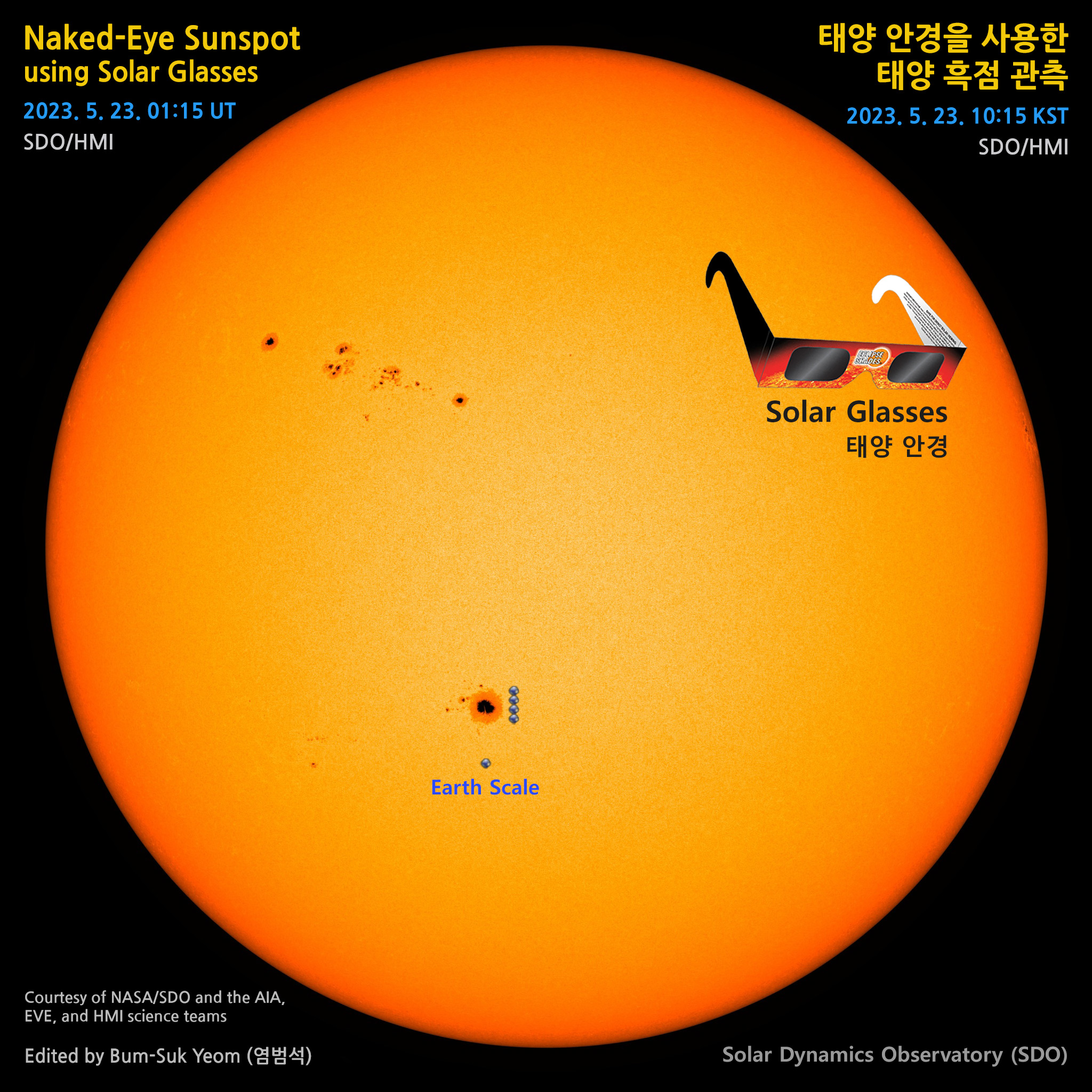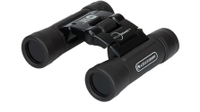A massive sunspot is currently visible to the unaided eye. Here's how to see it safely before it's gone
The new sunspot is 4 times the size of Earth.

If you're looking to get a view of a massive sunspot that has delighted skywatchers, you better hurry - but be careful.
Normally, catching sight of a sunspot on the sun requires a powerful telescope and a whole lot of special equipment and filters, but a new sunspot has grown so big that you can see it without a telescope at all — but you're still going to need eye protection.
South Korean astronomer Bum-Suk Yeom created the photo above showing the relative scale of AR3310 with the Earth to give you a sense of just how enormous this particular sunspot is. AR3310 is currently on the edge of the sun's visible disk, about to rotate out of view, so act fast if you want to see this sunspot.
Related: Sunspots: What are they, and why do they occur?
Since a sunspot is the product of strong magnetic fields, they are usually the point on the sun's surface that produce solar flares, also known as coronal mass ejections, or CMEs. These massive bursts of solar plasma can even reach as far as Earth and interfere with electronics, as well as produce visually stunning auroras.
The sunspot AR3310 is a massive dark patch on the sun that is about four times the size of Earth, and it is caused by especially strong and intertwined magnetic fields. In the case of sunspots, the magnetic fields are so powerful that they actually keep some of the heat from nuclear fusion inside the sun from reaching its outer atmosphere, producing a cool spot that appears dark to an observer.
Astronomers and astrophotographers around the world have been observing AR3310 while it has been visible, leading to some incredible images of the sun and this massive sunspot.
Get the Space.com Newsletter
Breaking space news, the latest updates on rocket launches, skywatching events and more!
NAKED-EYE SUNSPOT: This is sunspot region AR3310. It is rare in that it is large enough to be seen without the aid of a telescope. NEVER LOOK DIRECTLY AT THE SUN with binoculars or a telescope! Even sunglasses are bad. Get some welder's glass #14 from your local hardware shop. pic.twitter.com/HmVAgCXAtuMay 23, 2023
Today's Sun observation through lots of clouds. 11 Groups with 63 individual sunspots as we say goodbye to old friend AR3310 and wait to see what's coming next. 1/2 @StormHour @ThePhotoHour #astrophotography #astronomy pic.twitter.com/UfCqao8f4aMay 29, 2023
Un petit tour sur le #soleil avec la lunette Secretan centenaire …Les belles taches solaires AR3315-AR3310-AR3312 pic.twitter.com/9sYvm6dWlXMay 28, 2023
If you want to see AR3310 for yourself, you're going to need some solar glasses at the very least. These are the same kinds of glasses normally used to watch a solar eclipse, and they are essential to observing the sun safely. Regular sunglasses won't do, to be clear, and if you happen to have a pair of solar glasses left over from a recent solar eclipse, make sure that the solar filter on the glasses aren't scratched. If they are, use another pair.
The other way of observing the sun with binoculars is with dedicated solar viewing binoculars that have solar filters built-in. These not only provide a safe way to view the sun, but also offer a magnified view of the entire solar disk.
Celestron EclipSmart 10x42 Solar Viewing Binoculars
These aren't any ordinary binoculars from Celestron, but multi-coated solar safe binoculars with BK-7 optics and ISO 12312–2 compliant for solar observing. View the sun safely for under $100.
It's also important to put the solar glasses on before looking at the sun, and to look away from the sun before taking the glasses off. Even a brief exposure to the sun's light without eye protection can cause permanent damage to your eyes.
And if you want to take pictures of AR3310 or any other sunspot, make sure to see our guide on how to photograph the sun. Just remember: Safety comes first!
Join our Space Forums to keep talking space on the latest missions, night sky and more! And if you have a news tip, correction or comment, let us know at: community@space.com.
John is a science and technology journalist and Space.com contributor. He received his B.A. in English and his M.A. in Computer Science from the City University of New York, Brooklyn College, and has bylines with TechRadar, Live Science, GamesRadar, and other publications. You can find him on Bluesky at @johnloeffler.bsky.social or seeking out dark sky country for spectacular views of the cosmos.










